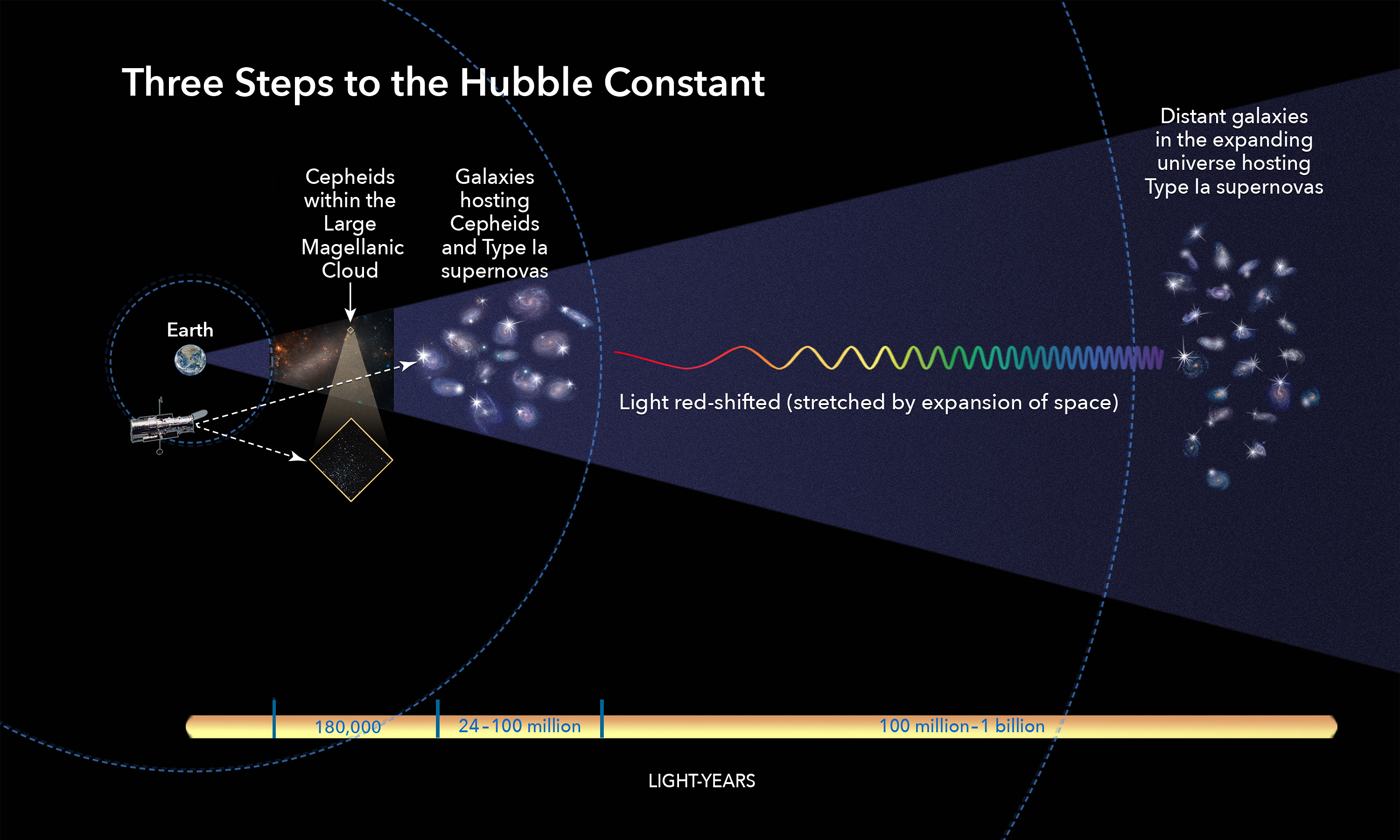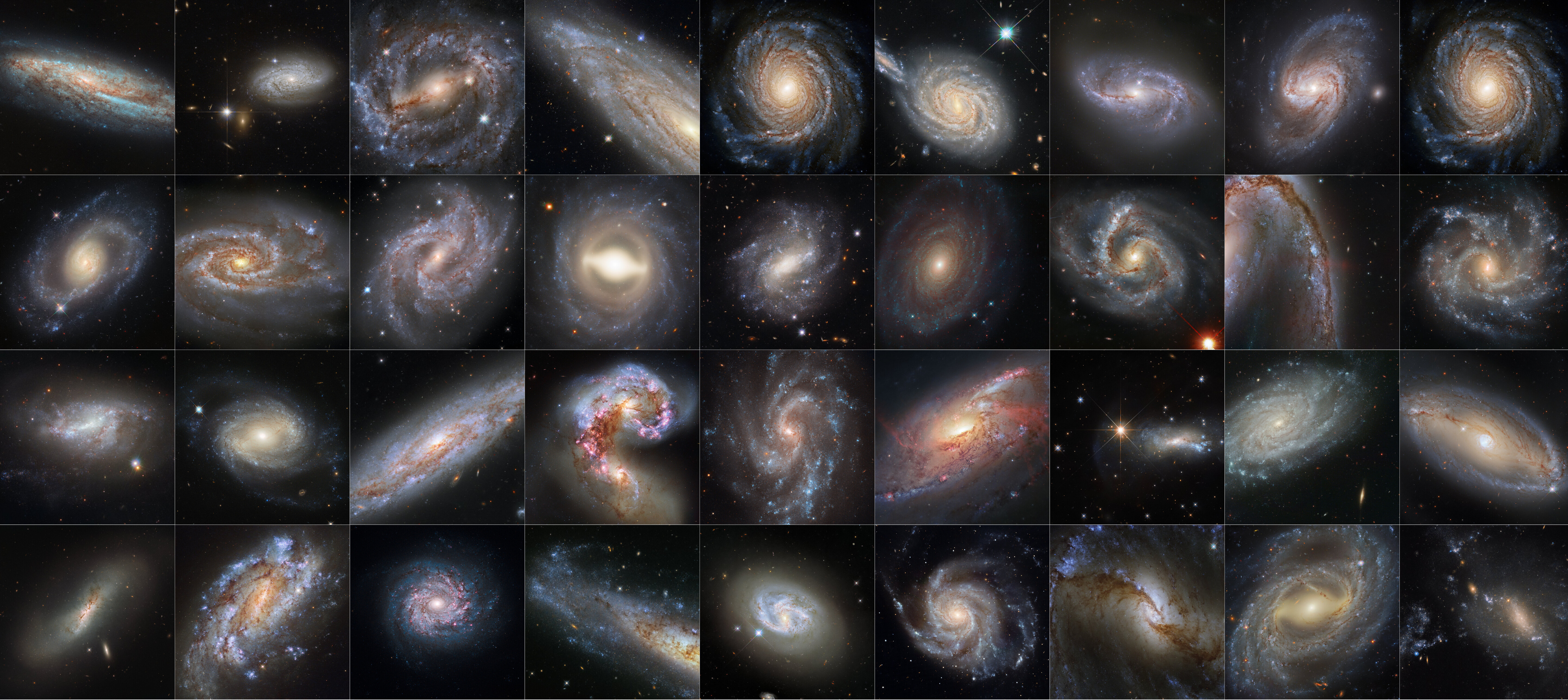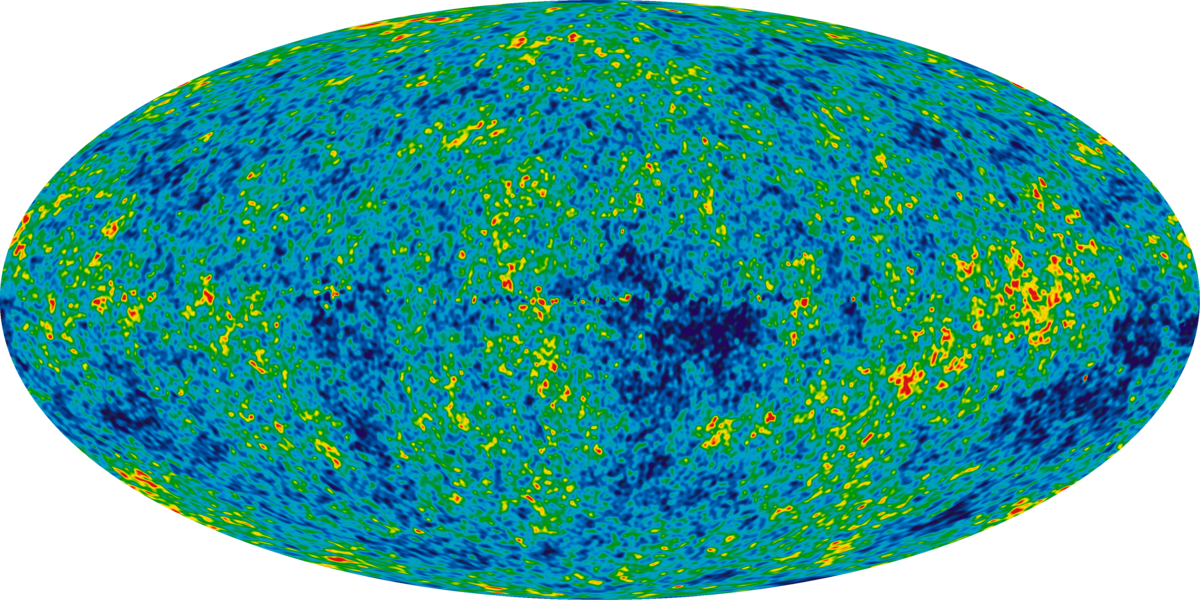Welcome to the Course
Explore the methods astronomers use to measure the vast distances of our universe, from nearby stars to the most distant galaxies.
Begin the JourneyModule 1: Introduction to Cosmic Measurements
The Quest to Measure the Cosmos
Throughout history, humans have looked up at the night sky and wondered about the distances to the stars and other celestial objects. This module explores the historical development of our understanding of cosmic distances.

The cosmic distance ladder illustrates how astronomers use different methods to measure distances at different scales. Credit: NASA, ESA
The Challenge of Cosmic Distances
Why is measuring the universe so difficult? This unit explores the fundamental challenges astronomers face when trying to determine distances beyond our solar system.
Module 2: Foundations of Distance Measurement
Our Solar System as a Baseline
The first step in measuring the universe is understanding the scale of our own solar system. This unit explores how astronomers determined the astronomical unit (AU) and established the first rung of the cosmic distance ladder.
Reaching the Stars with Parallax
Parallax is the apparent shift in position of a nearby star against the background of distant stars as Earth orbits the Sun. This fundamental technique allows astronomers to measure distances to nearby stars.
Module 3: Standard Candles and Cosmic Yardsticks
Variable Stars as Distance Indicators
Certain types of variable stars, particularly Cepheid variables and RR Lyrae stars, have a known relationship between their period of variation and their intrinsic brightness. This makes them valuable "standard candles" for measuring distances.

This collection of galaxies hosts both Cepheid variables and supernovae, making them crucial for calibrating cosmic distances. Credit: ESA/Hubble
Stellar Populations and Clusters
Globular clusters and other stellar populations provide another method for determining distances through techniques like main sequence fitting.
Module 4: Extending to Galaxies and Beyond
Supernovae as Cosmic Beacons
Type Ia supernovae are among the brightest events in the universe and have a nearly uniform intrinsic brightness, making them excellent standard candles for measuring vast cosmic distances.
The Expanding Universe
Edwin Hubble's discovery that galaxies are moving away from us at speeds proportional to their distance revolutionized our understanding of the universe. This unit explores Hubble's Law and how redshift measurements help determine cosmic distances.

The cosmic microwave background radiation provides evidence of the universe's early state. Credit: NASA/WMAP Science Team
Module 5: Advanced Measurement Techniques
Gravitational Lensing
Einstein's theory of general relativity predicts that massive objects can bend light. This phenomenon, known as gravitational lensing, has become an important tool for measuring cosmic distances.
Cosmic Microwave Background
The cosmic microwave background radiation is the afterglow of the Big Bang. Measurements of its properties help determine the age, size, and geometry of the universe.
Module 6: The Future of Cosmic Measurement
Current Challenges and Controversies
Modern measurements of the universe's expansion rate have revealed tensions between different methods. This unit explores the Hubble tension and other current challenges in cosmic distance measurement.
Next-Generation Techniques
New telescopes and innovative methods promise to revolutionize our ability to measure cosmic distances. This unit looks at the future of cosmic distance measurement.